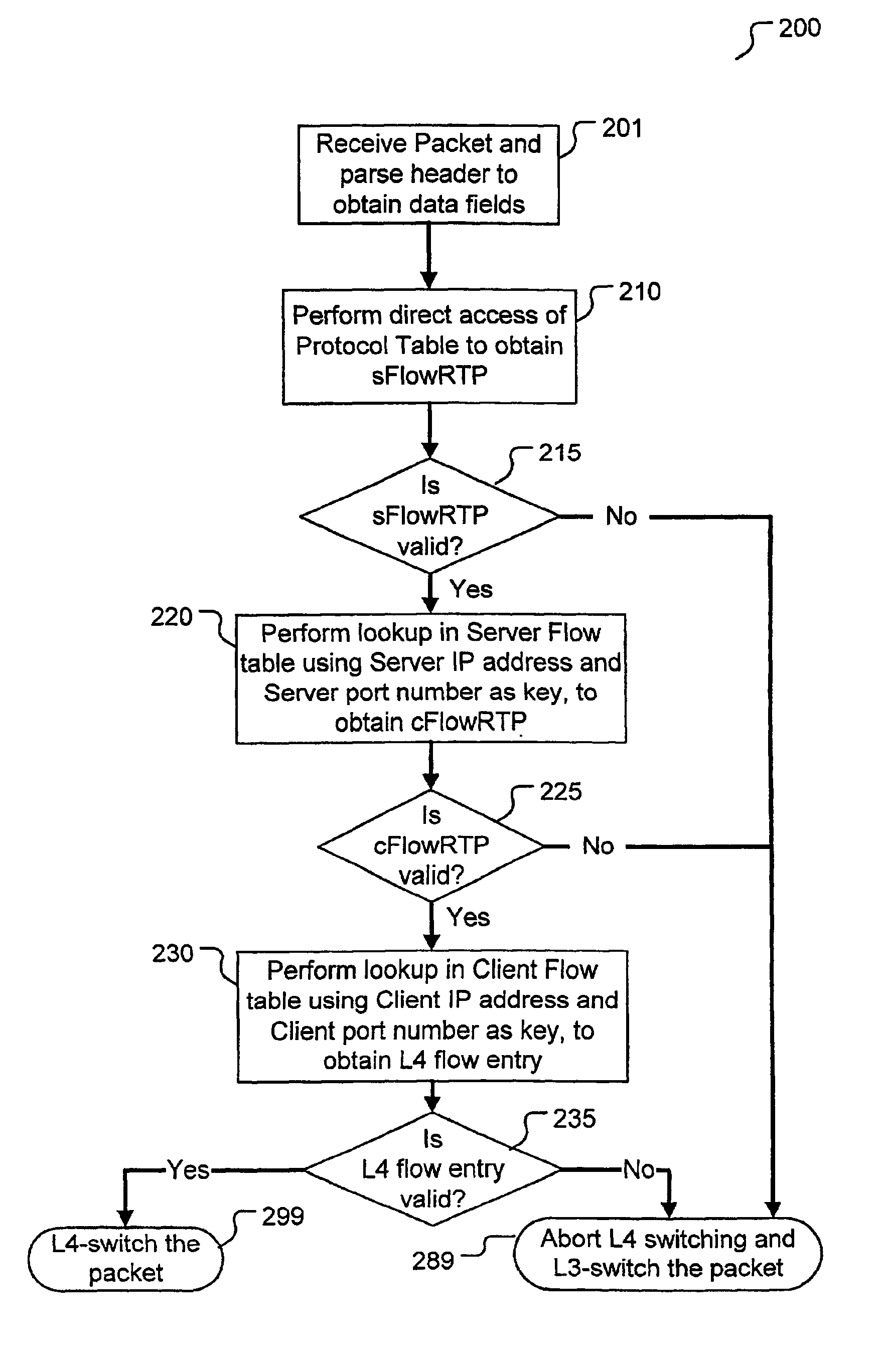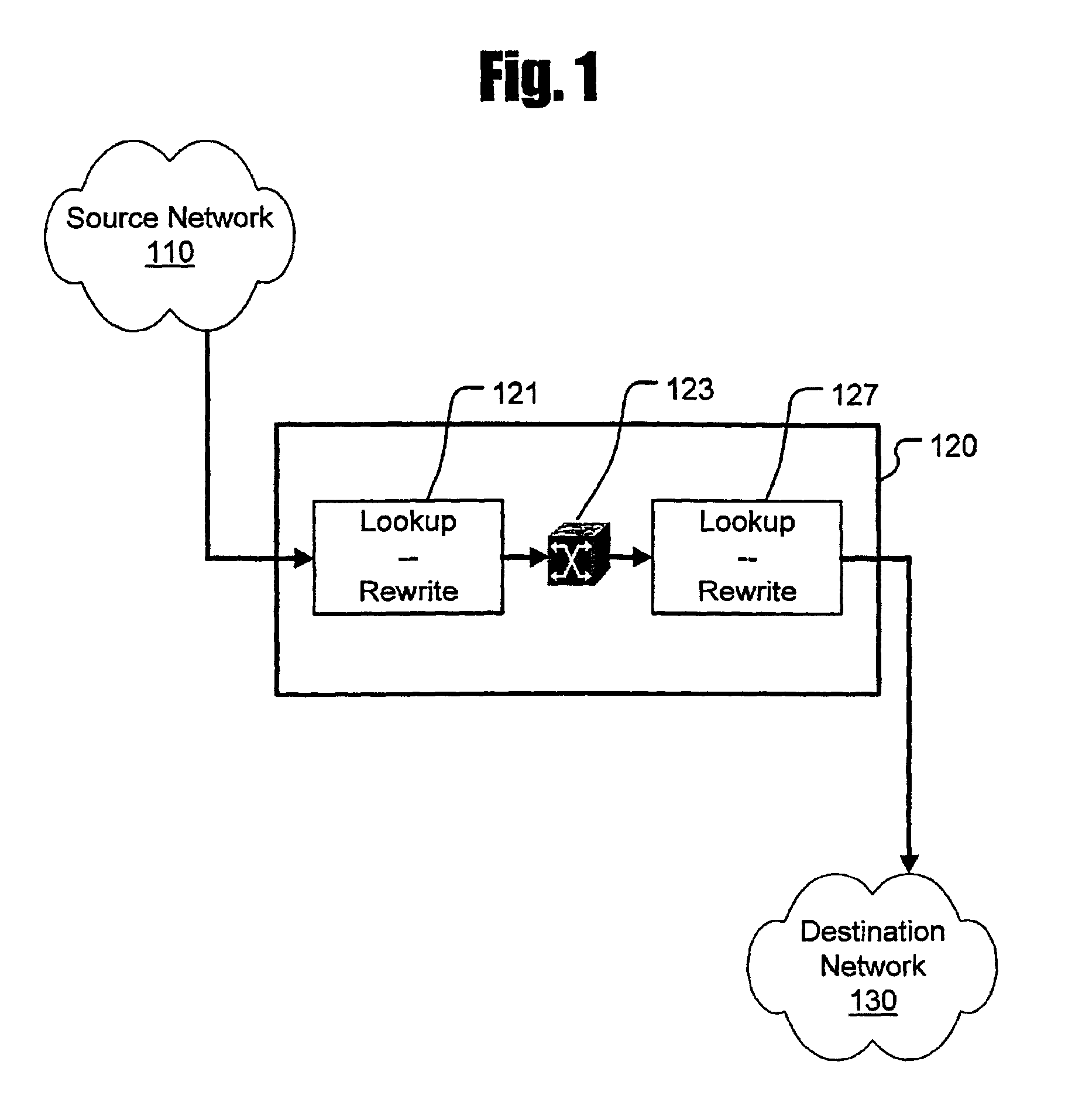L4 lookup implementation using efficient CAM organization
- Summary
- Abstract
- Description
- Claims
- Application Information
AI Technical Summary
Benefits of technology
Problems solved by technology
Method used
Image
Examples
Embodiment Construction
Process Flow
FIG. 2 shows a flow chart of the method 200 of one embodiment of the present invention. In step 201, the packet is received and the header is read by means well known in the art. In next step 210, the 8-bit protocol field located in the Internet Protocol (IP) header is read and used to perform a direct lookup in the Protocol Table. This lookup, which determines a pointer to the root tree for a particular server flow associated with the inbound packet, returns the value of the Server Flow Table root tree pointer sFlowRTP.
Step 215 checks to determine if the sFlowRTP value is valid. This check, in one embodiment of the present invention, is nothing more than a simple “not equal to zero” test Such a test is used to determine if a valid (non-zero) sFlowRTP pointer has been returned. If there is no sFlowRTP pointer, i.e., sFlowRTP is equal to zero, Layer 4 switching is aborted and conventional Layer 3 switching is performed by means well known in the art at step 289.
If the sFl...
PUM
 Login to View More
Login to View More Abstract
Description
Claims
Application Information
 Login to View More
Login to View More - R&D
- Intellectual Property
- Life Sciences
- Materials
- Tech Scout
- Unparalleled Data Quality
- Higher Quality Content
- 60% Fewer Hallucinations
Browse by: Latest US Patents, China's latest patents, Technical Efficacy Thesaurus, Application Domain, Technology Topic, Popular Technical Reports.
© 2025 PatSnap. All rights reserved.Legal|Privacy policy|Modern Slavery Act Transparency Statement|Sitemap|About US| Contact US: help@patsnap.com



